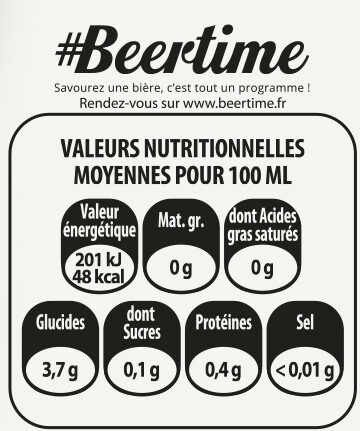1664 6x25cl 1664 bio fr-bio-01 5.5 degre alcool - 1500 ml
This product page is not complete. You can help to complete it by editing it and adding more data from the photos we have, or by taking more photos using the app for Android or iPhone/iPad. Thank you!
×
Some of the data for this product has been provided directly by the manufacturer BRASSERIES KRONENBOURG.
Barcode: 3080216054407 (EAN / EAN-13)
Common name: Bière blonde
Quantity: 1500 ml
Packaging: Bottle, fr:Etui en carton
Brands: 1664, 1664 Bio Non Filtrée, 1664 Bio
Categories: Beverages, Alcoholic beverages, Beers
Labels, certifications, awards:
Organic, EU Organic, Non-EU Agriculture, Not advised for specific people, EU Agriculture, EU/non-EU Agriculture, FR-BIO-10, Not advised for children and pregnant women, PEFC, AB Agriculture Biologique, Triman



Origin of the product and/or its ingredients: 67210 Obernai
Stores: carrefour.fr
Countries where sold: France
Matching with your preferences
Other information
Preparation: NC
Conservation conditions: Pour s'assurer que le produit conserve ses caractéristiques, il est essentiel qu'il soit stocké à l'abri de la lumière directe, dans un endroit sec, à température modérée. Durée maxi de stockage, précisée sur l'étiquette palette. Ne se conserve pas après ouverture.
Customer service: Service Consommateurs BK, 03 88 27 59 59
Report a problem
Data sources
The manufacturer BRASSERIES KRONENBOURG uses Equadis to automatically transmit data and photos for its products.
Product added on by kiliweb
Last edit of product page on by org-brasseries-kronenbourg.
Product page also edited by driveoff, ecoscore-impact-estimator, openfoodfacts-contributors, packbot, roboto-app, yuka.WFAwcUdaUWZnTndtbmNaZzlUSG4xOWRzOWEyc1cxUHBOdmd0SVE9PQ.












